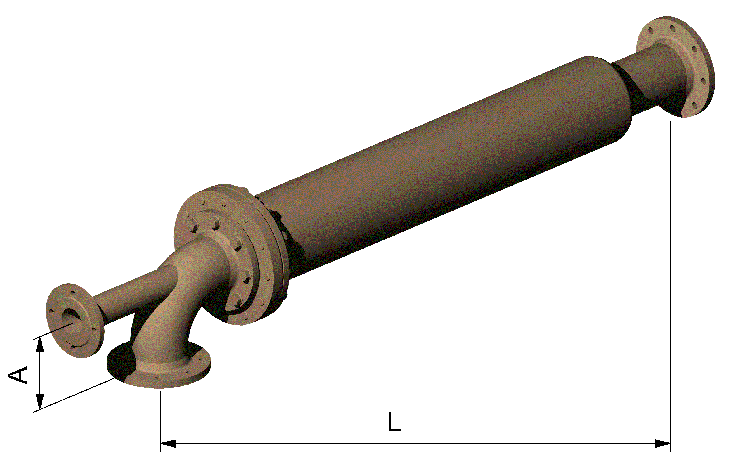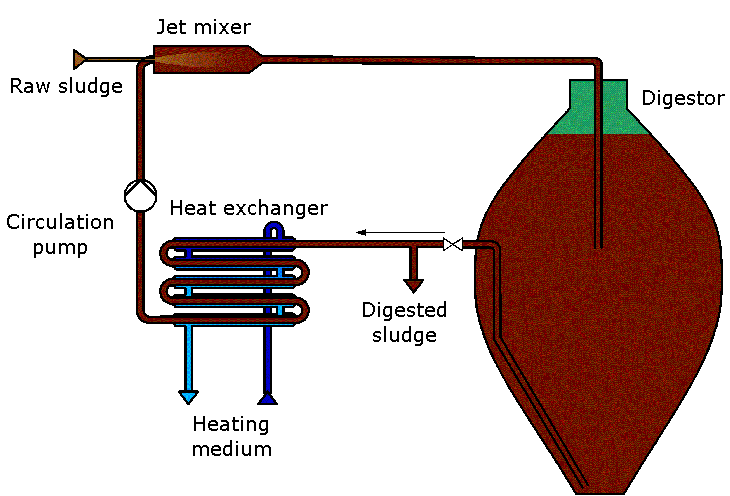
![]()
| Back to main page |
|
| Die LIMUS Umwelttechnik
GmbH hat Ihre Geschäftstätigkeit aufgegeben. Wir von der PONDUS Verfahrenstechnik GmbH möchten Ihnen aber gern weiterhin mit Rat und Tat zur Seite stehen. |
 |
| Wir freuen uns über Ihren Besuch. Sie werden automatisch zu uns weitergeleitet. |

Fig. 1: Jet mixer
Since some years mechanical thickening of waste activated sludge prior to digestion is successful used. With centrifuges or belt filters and polymer flocculants concentrations of more than 6 to 10% DS are achieved. This makes the sludge much viscous so it cannot be adequately mixed with digested sludge by convential means. On account of the higher specific weight due to the higher solid matter content and lower temperature, the concentrated waste activated sludge accumulates at the bottom of the digestion tank, particularly if sludge is not drawn up at the lowest point. Consequently, the waste activated sludge does not participate in alkaline digestion, it becomes acidic and produces readily soluble carbon dioxide. In the beginning nothing is noticeable until weeks or even months later when so much gas has formed in this sludge that the high solubility limit (on account of the water pressure) is exceeded so that even more bubbles are formed. However, these bubbles initially remain trapped in the sludge matrix with the result that the sludge become lighter. The pressure diminishes as the accumulated sludge start to rise, resulting in the rapid formation of still more bubbles, similar to when a bottle of fizzy water is opened. Sludge balls are propelled to the surface thereby giving rise to the dreaded "boil over" of the Digestion tower.
To achieve the necessary mix it is not enough to "inoculate" the raw sludge with waste activated sludge in a Y-pipe in a ratio of 1:1 or 1:2. This is because sewage sludge flow is laminar at relatively low concentrations so that mixing does not take place at the customary flow speeds and minimal flowing volumes.
The LIMUS jet mixer is a further development of the well known LIMUS In-line mixer, and it also exploits the effect of jet turbulence. The circulated sludge is accelerated at the inlet to form a thorough mix with the raw sludge in the subsequent mixing compartment. Induced flow-back intensifies longitudinal mixing of the two streams so that fluctuations in the volume streams are compensated.
With precise design conditions, the mixing process requires a pressure loss of approx. 0.25 bar. The inlet of the jet mixer can be exchanged to adapt it to alternative sludge conditions.

Fig. 2: Installing a jet mixer in a Digestion plant
The diagram shows a simplified Digestion plant equipped with a heat circulating system, a circulating pump, a heat exchanger and a jet mixer.
The LIMUS jet mixer is made of stainless steel. Endangered parts are additionally abrasion protected.
Technical data
Flange acc. to DIN 2576